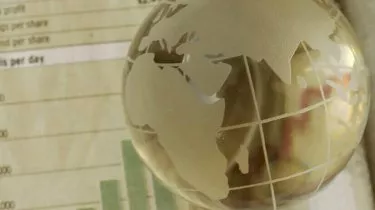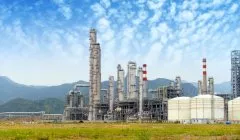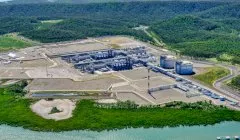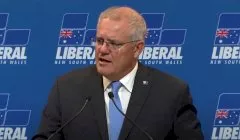Invest
Big risks, big opportunities face commodities markets in 2019
Exposure to commodities is a key diversification tool for investment portfolios, and there are some hangovers from 2018 and emerging growth areas for 2019 to be aware of to secure strong returns.
Big risks, big opportunities face commodities markets in 2019
Exposure to commodities is a key diversification tool for investment portfolios, and there are some hangovers from 2018 and emerging growth areas for 2019 to be aware of to secure strong returns.

Headline market themes
“The major themes for commodity markets will be the carryover effects of the volatility seen in 2018,” said Matthew Kaleel, portfolio manager for diversified alternatives at Janus Henderson.
“Dominating global financial markets over 2018 were the trade tensions between China and the US, broader geopolitical uncertainty, the forward path for the US Federal Reserve (Fed), inflation and the US dollar," he said.
"Each of these factors will continue to shape markets in 2019, while the ever-present bottom-up factors of actual and potential commodity demand and weather will also play a role.”

Risks and rewards
However, he says there is positivity on the horizon as commodities continue on their path of recovery heading into the new year.
“From a cyclical-perspective, and unlike the equity and bond markets, commodities are going into their fourth year of recovery from their low point in January 2016,” Mr Kaleel said.
“While this presents a case for the inclusion of commodities as a genuine diversifier within an investment portfolio, the risks to commodities resulting from escalating trade and geopolitical tensions must (as always) be actively managed.”
He says the tense political climate between China and the US must continue to be monitored in 2019, as the result will impact portfolios with commodity asset allocations.
“There are a number of risks and opportunities to commodities, with the primary risk being the current tensions between China and the US on trade and tariffs,” Mr Kaleel said.
“A stalemate or resolution on this one issue provides both a risk and opportunity to most commodity markets. As such, the path this takes is possibly the single biggest marginal factor in pricing.”
He says the US Federal Reserve must also be watched carefully, as any movement in rates would impact both the US dollar and interest rates, which in turn will have repercussions for the commodity markets.
“The second factor is the relative speed of the normalisation path that the Fed takes in 2019,” Mr Kaleel said.
“Any change to interest rate policy, wording or Fed dot plots would have a potentially material impact on the US dollar, relative interest rates and real interest rates, broadly affecting commodities and more specifically impacting markets such as gold.”
“Should global markets continue to exhibit signs of stress, and US corporate earnings show signs of slowing, a slowdown in the speed of normalisation would be materially positive for commodities.”
One to watch
He advises investors keep their eyes on the energy and grain markets, as oil prices continue to drop, while natural gas and grain are likely to experience material upsides in 2019.
“Energy and grain markets provide the greatest degree of variability and, as such, greatest opportunity and risk,” Mr Kaleel said.
“The recent slide in benchmark crude oil prices and sharp rise in Natural Gas prices highlight how multiple factors like weather, geopolitics and US trade policy can affect the outlook of markets, even in the same sectors.
“A further deterioration in energy prices from current levels (low US$50 per barrel) would start to impact production and provide the impetus for OPEC and Russia to reduce production in order to stabilise markets,” he explained.
“Grain markets provide the greatest potential reward to risk opportunities from current price levels. A combination of factors such as US dollar weakness, demand surprising on the upside, adverse weather and a resolution to trade tensions would all provide material upside catalysts.
“Emerging market dynamics will (as always) affect specific markets. A bottoming in currencies such as the Brazilian real, for example, would provide a base and potential upside for commodities sensitive to Brazilian dynamics, such as Coffee and Sugar,” Mr Kaleel concluded.

Commodity
Gold's remarkable surge in 2025 sets the stage for a volatile 2026
Gold has experienced a stellar year in 2025, achieving over 50 all-time highs and delivering a return exceeding 60%, making it one of the top-performing assets. This impressive performance has been ...Read more

Commodity
Scenic Eclipse launches fifth Antarctica season with new submersible, private jet transfers and helicopter experiences
Scenic Discovery Yachts has commenced its fifth Antarctica season, introducing new ultra-luxury experiences including private jet transfers, advanced helicopter excursions and a new Scenic Neptune ...Read more

Commodity
Is crypto getting the shaft for a big gold re-polish?
While the spotlight shines on trendy cryptocurrencies, investors evidently haven’t lost interest in traditional and tangible commodities like precious metals. Read more

Commodity
Morrison’s gas-led recovery sees manufacturers ‘held to ransom’ by gas cartel
Australia’s manufacturing sector and its workers are being ‘held to ransom’ by the gas cartel, despite the Morrison government promising cheap gas as a key policy in the COVID-19 recovery planRead more

Commodity
‘Investors should take note’: Gas-led recovery to lead to stranded assets
Australia’s gas-led economic recovery could be relying on inaccurate financial assumptions, new research has revealed. Read more

Commodity
Credibility up in flames as government opens 21 new gas and oil exploration sites
Climate groups are saying the Morrison government lacks any credibility when it comes to climate change after it announced 21 new gas and oil exploration areas. Read more

Commodity
Morrison urged to drop gas-led recovery after new global warning
The International Energy Agency has found that countries like Australia need to transition their energy grid within 14 years to reach net zero, defying Prime Minister Scott Morrison’s gas-led economic ...Read more

Commodity
Taxpayers to bear brunt of Morrison’s $2bn pledge to oil refineries
Taxpayers are set to be on the hook for up to $2 billion over the next decade as the government commits to protecting two oil refineries. Read more

Commodity
Gold's remarkable surge in 2025 sets the stage for a volatile 2026
Gold has experienced a stellar year in 2025, achieving over 50 all-time highs and delivering a return exceeding 60%, making it one of the top-performing assets. This impressive performance has been ...Read more

Commodity
Scenic Eclipse launches fifth Antarctica season with new submersible, private jet transfers and helicopter experiences
Scenic Discovery Yachts has commenced its fifth Antarctica season, introducing new ultra-luxury experiences including private jet transfers, advanced helicopter excursions and a new Scenic Neptune ...Read more

Commodity
Is crypto getting the shaft for a big gold re-polish?
While the spotlight shines on trendy cryptocurrencies, investors evidently haven’t lost interest in traditional and tangible commodities like precious metals. Read more

Commodity
Morrison’s gas-led recovery sees manufacturers ‘held to ransom’ by gas cartel
Australia’s manufacturing sector and its workers are being ‘held to ransom’ by the gas cartel, despite the Morrison government promising cheap gas as a key policy in the COVID-19 recovery planRead more

Commodity
‘Investors should take note’: Gas-led recovery to lead to stranded assets
Australia’s gas-led economic recovery could be relying on inaccurate financial assumptions, new research has revealed. Read more

Commodity
Credibility up in flames as government opens 21 new gas and oil exploration sites
Climate groups are saying the Morrison government lacks any credibility when it comes to climate change after it announced 21 new gas and oil exploration areas. Read more

Commodity
Morrison urged to drop gas-led recovery after new global warning
The International Energy Agency has found that countries like Australia need to transition their energy grid within 14 years to reach net zero, defying Prime Minister Scott Morrison’s gas-led economic ...Read more

Commodity
Taxpayers to bear brunt of Morrison’s $2bn pledge to oil refineries
Taxpayers are set to be on the hook for up to $2 billion over the next decade as the government commits to protecting two oil refineries. Read more









